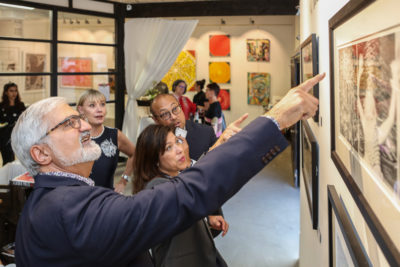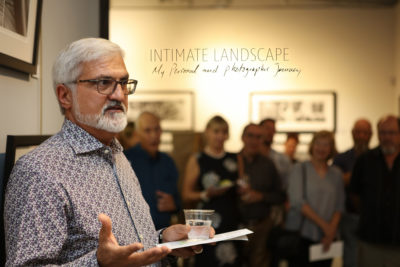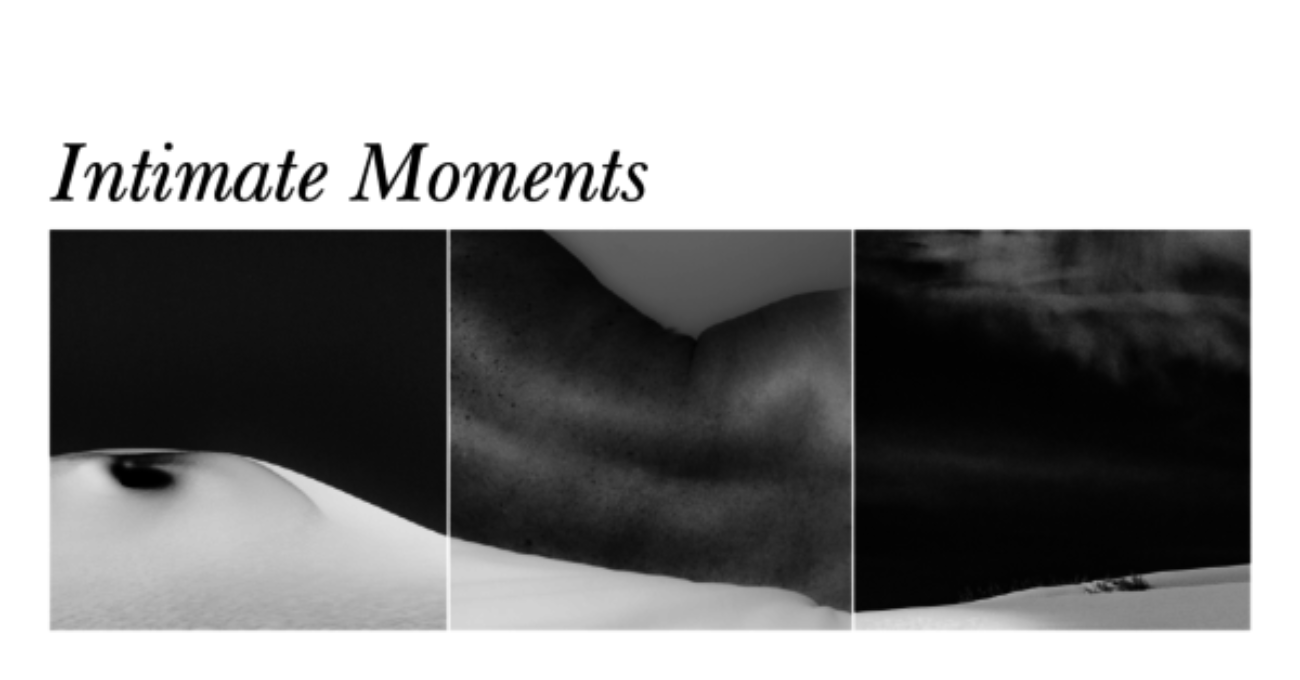Intimate Moments on Intimate Landscapes
What was once considered a taboo subject matter is revealed in an emotional photographic exhibition at The Art Avenue Gallery in El Paso, Texas with the images receiving an award from Rangefinder Magazine.
Emergency Room Physician Sirous Partrovi’s life changed the day his wife Patti Wetzel, also a physician at the time, was struck with a needle from a patient infected with HIV. He wasn’t sure how the future would play out for them, so he turned to photography as a catalyst to channel his emotions. Many years and 30,000 images later, he was able to successfully direct his feelings into the Intimate Landscape & Bodyscape Series—a collective of images from travels around the world incorporating photographs of his wife’s body.
You get quite personal in this exhibit…is this the first time sharing YOUR story to the public? At the time of Patti’s needle-stick, she was running the inpatient AIDS unit at the county hospital in Fort Worth. This was during the AIDS epidemic when the disease was shrouded in secrecy and there was much fear in general public. So, shortly after we learned about Patti’s diagnosis, SHE told her story publicly. It was her way to de-stigmatize the disease.
A few years ago I began contemplating a photography project that would help me explore my feelings surrounding Patti’s diagnosis and my reaction to it. At the time, I had no idea where this would lead but Patti was very supportive although unknowing that it would ultimately involve photos of her body. More recently, when the nature of the project declared itself, she was increasingly supportive of the work, of literally being a part of the photographs and of the “breakthrough.”


How did you endure the tough times?
By going to work as an ER physician. When you deal with your patient’s lives being cut short on a daily basis you develop an appreciation of your own situation. I’d tell myself that Patti is still here and that I can still love her. I also believe in psychotherapy and the power of therapeutic medications. I have had my share of uncertainty and depression, but thanks to the support of family and friends and the professionals that I trusted, I pulled out of it.
You mentioned you have been working on this body of work for five years…how did it come together? Did you foresee this body of work or did it just evolve?
Although I had a vague idea of this project several years ago, it was not until I took a workshop with Susan Bernstein that I realized I was completely unable to articulate the concept. This workshop was actually a week-long psychotherapy session in which we all took a deep look at the kind of work that we wanted to produce and how that could be accomplished. Susan gave each of us our own word to ponder every time we pressed the shutter and even though she pushed me to choose between the words together and isolated, much to my surprise, after speaking of loneliness and depression when sharing my project idea, I chose the word “together” for me. This seemed totally incongruous with the way that I was feeling but planted a seed in my subconscious.
During my trip to Iceland, the stark landscape and the photos that I took all seemed to resonate with isolation and further reinforce my loneliness. But shortly after that trip while on vacation with Patti, her naked and sleeping body conjured up some of the same images that I found so beautiful and haunting in my Iceland series. That was my “a ha” moment and the idea of incorporating Patti into images that were stark yet sensual and that mirrored the landscapes I loved from Iceland and White Sands was the inception of the Bodyscape series.


Why did you become an artist?
I remember that as a child growing up in Iran, I loved to draw and make collages from torn pages of magazines. I was attracted to form and structure. And as much as I prized these values, I was pushed towards the sciences by my family. Then I moved to the United States, went to college, became a doctor and practiced the art of medicine. Along the way I took a photography course in school, ceramic workshops later in life and finally with the advent of digital photography I began to dabble in that art form. Art for me is an outlet, a voice, something I can do to lose myself while time stays still.

There is only one color image in these works, why so many black and white images in the exhibit? The snow covered hills in Iceland were black and white when I photographed them. They were void of color. As the project progressed the images spoke to me more succinctly in black and white. To me black and white removes distraction of color and the emotions it portrays on the surface.
Are you at peace with the outcome of this series?
I say this work is still in progress. I want to continue this project as long as I can, but I am happy about the direction it has taken me.
What have you learned as an artist through this time.
As Steven Sondheim said, ‘Art isn’t easy, but does get easier if you have something to say that resonates with the audience.’

Intimate Landscape and Bodyscape are on display at The Art Avenue Gallery and runs through November 24, 2017.
The Art Avenue Gallery hours are Tuesday, Thursday & Friday 11:00 a.m. – 5:00 p.m.. and Wednesday 11:000a.m. -2:00 p.m. at 1618 Texas Ave. Suite E. For additional information or questions, please email info@theartave.com or call 915.213.4318.

